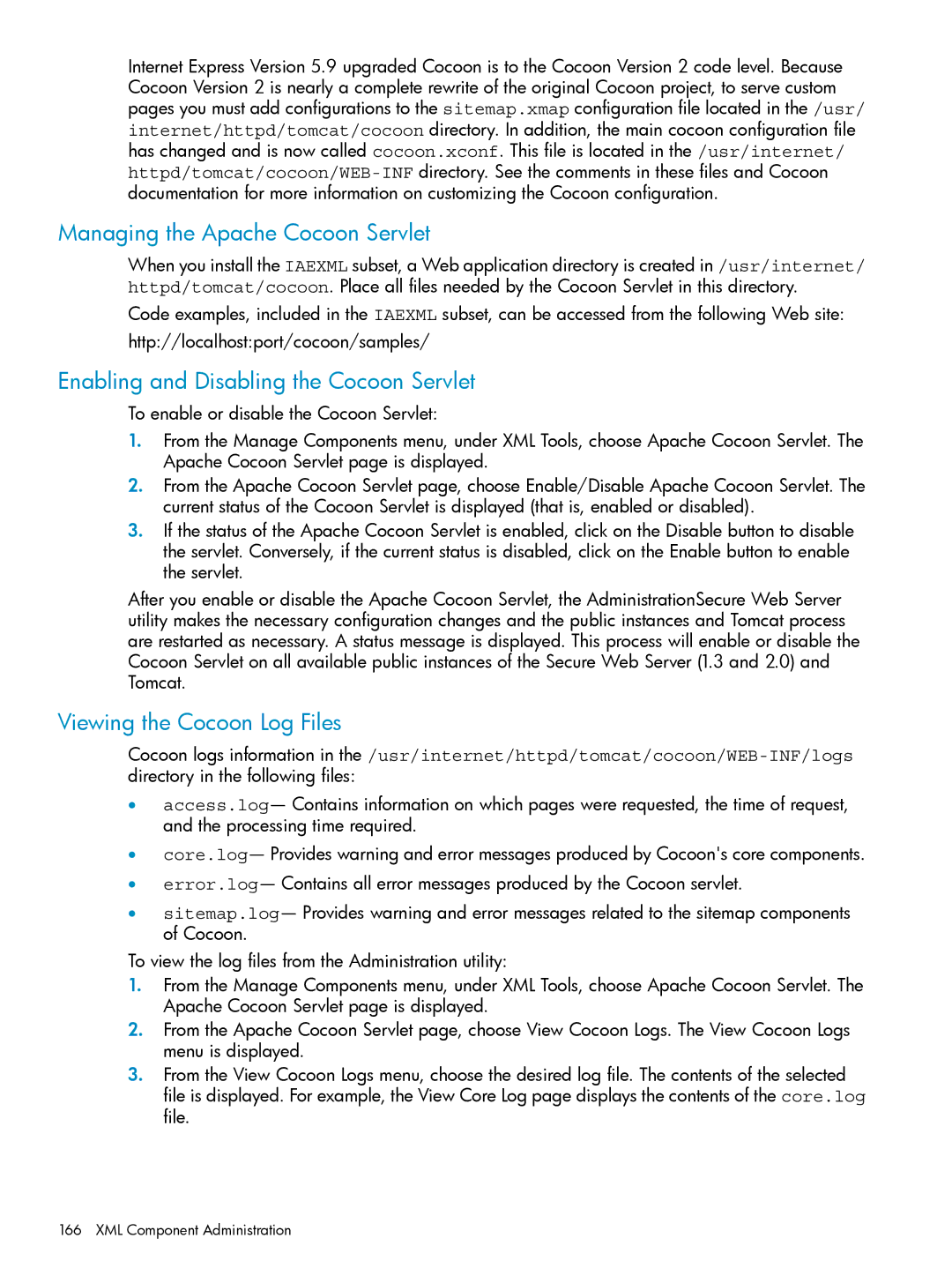Internet Express Version 5.9 upgraded Cocoon is to the Cocoon Version 2 code level. Because Cocoon Version 2 is nearly a complete rewrite of the original Cocoon project, to serve custom pages you must add configurations to the sitemap.xmap configuration file located in the /usr/ internet/httpd/tomcat/cocoon directory. In addition, the main cocoon configuration file has changed and is now called cocoon.xconf. This file is located in the /usr/internet/
Managing the Apache Cocoon Servlet
When you install the IAEXML subset, a Web application directory is created in /usr/internet/ httpd/tomcat/cocoon. Place all files needed by the Cocoon Servlet in this directory.
Code examples, included in the IAEXML subset, can be accessed from the following Web site:
http://localhost:port/cocoon/samples/
Enabling and Disabling the Cocoon Servlet
To enable or disable the Cocoon Servlet:
1.From the Manage Components menu, under XML Tools, choose Apache Cocoon Servlet. The Apache Cocoon Servlet page is displayed.
2.From the Apache Cocoon Servlet page, choose Enable/Disable Apache Cocoon Servlet. The current status of the Cocoon Servlet is displayed (that is, enabled or disabled).
3.If the status of the Apache Cocoon Servlet is enabled, click on the Disable button to disable the servlet. Conversely, if the current status is disabled, click on the Enable button to enable the servlet.
After you enable or disable the Apache Cocoon Servlet, the AdministrationSecure Web Server utility makes the necessary configuration changes and the public instances and Tomcat process are restarted as necessary. A status message is displayed. This process will enable or disable the Cocoon Servlet on all available public instances of the Secure Web Server (1.3 and 2.0) and Tomcat.
Viewing the Cocoon Log Files
Cocoon logs information in
•access.log— Contains information on which pages were requested, the time of request, and the processing time required.
•core.log— Provides warning and error messages produced by Cocoon's core components.
•error.log— Contains all error messages produced by the Cocoon servlet.
•sitemap.log— Provides warning and error messages related to the sitemap components of Cocoon.
To view the log files from the Administration utility:
1.From the Manage Components menu, under XML Tools, choose Apache Cocoon Servlet. The Apache Cocoon Servlet page is displayed.
2.From the Apache Cocoon Servlet page, choose View Cocoon Logs. The View Cocoon Logs menu is displayed.
3.From the View Cocoon Logs menu, choose the desired log file. The contents of the selected file is displayed. For example, the View Core Log page displays the contents of the core.log file.
166 XML Component Administration
